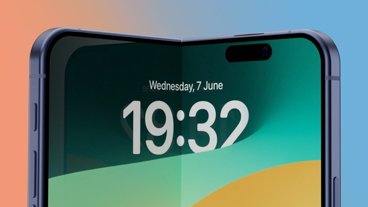Dual-graphics auto switching
More specifically, the Mac maker has up and running in its labs several next-generation MacBook Pros that can switch between their integrated and discrete graphics processors automatically, according to people familiar with the matter.
This differs from the company's existing MacBook Pro lineup, which requires users to manually toggle between an integrated Nvidia GeForce 9400M graphics core and the more powerful 9600M GT discrete processor by first making a selection in their Mac's Energy Saver system preference pane, then logging out and back in for the change to take effect (as shown below).
While those privy to Apple's plans could not say with complete certainty that the new technology would qualify for inclusion in the most immediate update to the MacBook Pro family, they do believe that's indeed the Cupertino-based company's plans. The current chipset situation Apple faces across its notebook lines also lends support to these claims.
Chipset setback
A year and a half ago, Apple made a radical decision to jettison Intel's supporting chipsets from its MacBook line in favor of cutting-edge chipset technology from Nvidia, one which works to support the systems' primary Intel CPU while bundling a GeForce 9400M integrated graphics processor supporting better battery life and up to five times faster graphics performance. MacBook Pros received similar treatment, with the addition of a secondary, more powerful Nvidia GeForce 9600M GT discrete graphics processor for higher performance operations.
The move threatened Intel's chipset business, prompting the chip maker to refuse Nvidia a licensing extension to develop rival chipsets for its latest-generation Nehalem architecture. Nehalem embodies the new Core i5 and Core i7 processors Apple and the broader industry are widely expected to use (1, 2) to power their forthcoming notebook refreshes, thereby requiring PC manufacturers like Apple to once again rely on proprietary Intel chipsets and their integrated graphics processors.
For its part, Nvidia disputed Intel's claim, saying it believed its license with Intel extended to the Nehalem architecture. In an effort to hold its ground, Intel took the matter to the courts, filing a lawsuit against the graphics chip maker to halt its development of compatible chipsets for Nehalem and future Intel architectures. These actions caused the U.S. Federal Trade Commission to step in last December with a lawsuit of its own against Intel, accusing the company of using its leverage in the market to stifle competition.
The ongoing high-tech spat has brought Nvidia's fledgeling chipset business to screeching halt, hindering Apple's future notebook designs in the process, according to people familiar with the matter. They say these unexpected complications may be a cause of blame for the aging status of the existing MacBook Pro line, which hasn't seen a significant update in over 16 months — well beyond its average.
Still, Nvidia hasn't been standing idle and as recently as this month introduced a new technology called Optimus [white paper PDF] to help secure its footprint in notebook designs across the industry. It's also strikingly similar to the description of the technology said to be making its way into next-generation MacBook Pros, which, given Apple's tight relationship with Nvidia, appears to be a bit more than a coincidence.
Specifically, Optimus was designed to work alongside Nehalem notebook designs that include an integrated Intel graphics processor in addition to a discrete Nvidia graphics chip, choosing the best of the two graphics processors for running a given application and automatically routing the workload to either the discrete Nvidia chip or Intel integrated graphics core to deliver the best performance while also providing optimal battery life.
"Just as a Hybrid car chooses between the gas-powered and electric car engine on-the-fly and uses the most appropriate engine, Nvidia Optimus technology does the same thing for graphics processors," Nvidia explains. "Optimus Technology instantly directs the workload through the most efficient processor for the job, extending battery life by up to 2 times compared to similarly configured systems equipped with discrete graphics processors."
Nvidia Optimus Application Scenario Comparison
For example, playing 3D games, running videos, or using graphics-intensive applications will trigger the high-performance Nvidia discrete chip while basic applications, like web surfing or email, will call upon the integrated Intel graphics processor. Nvidia says the technology, which begins shipping in notebooks this month, supports the GeForce 200M and GeForce 300M series — the successors to the GeForce 9600M GT chip found in existing MacBook Pros — as well as its future GeForce chips.
Although Optimus only officially supports Windows 7 at present, those briefed on the technology say that's only due to software limitations that Nvidia and Apple are likely tackling behind closed doors.
Nvidia did not return requests seeking comment and Apple has a long-standing corporate policy of not commenting on forward-looking reports involving rumor and speculation.
 Kasper Jade
Kasper Jade







-m.jpg)






 Charles Martin
Charles Martin
 Christine McKee
Christine McKee
 Wesley Hilliard
Wesley Hilliard
 Malcolm Owen
Malcolm Owen
 Andrew Orr
Andrew Orr
 William Gallagher
William Gallagher
 Sponsored Content
Sponsored Content








109 Comments
How does Intel's latest chipsets and their integrated graphics processors compare to nvidia's? If Apple has to release Macbook Pro's with Intel's graphics chips, is this a step backwards?
I just wish they'd hurry the heck up and get the new i5/i7 Arrandale MBP's out soon... selling the current models with Core 2 Duo at those prices is criminal. C'mon Apple, put the "Pro" back in MacBook Pro!
How does Intel's latest chipsets and their integrated graphics processors compare to nvidia's? If Apple has to release Macbook Pro's with Intel's graphics chips, is this a step backwards?
they suck and yesIf Intel wanted to snuff Nvidia, they should have bought them like AMD bought ATI.Guess they figured they just could move right in and not meet any resistance. I'm glad Intel is being sued by the Feds.
We need separate GPU's.
Considering Sony's new Z series of Vaio notebooks can auto-switch GPUs, I would certainly expect Apple to offer a similar solution. It's a shame the current MBPS can't already...
After Nvidia's zero concern with Apple after the MacBook issue, I say dump them and go for ATI